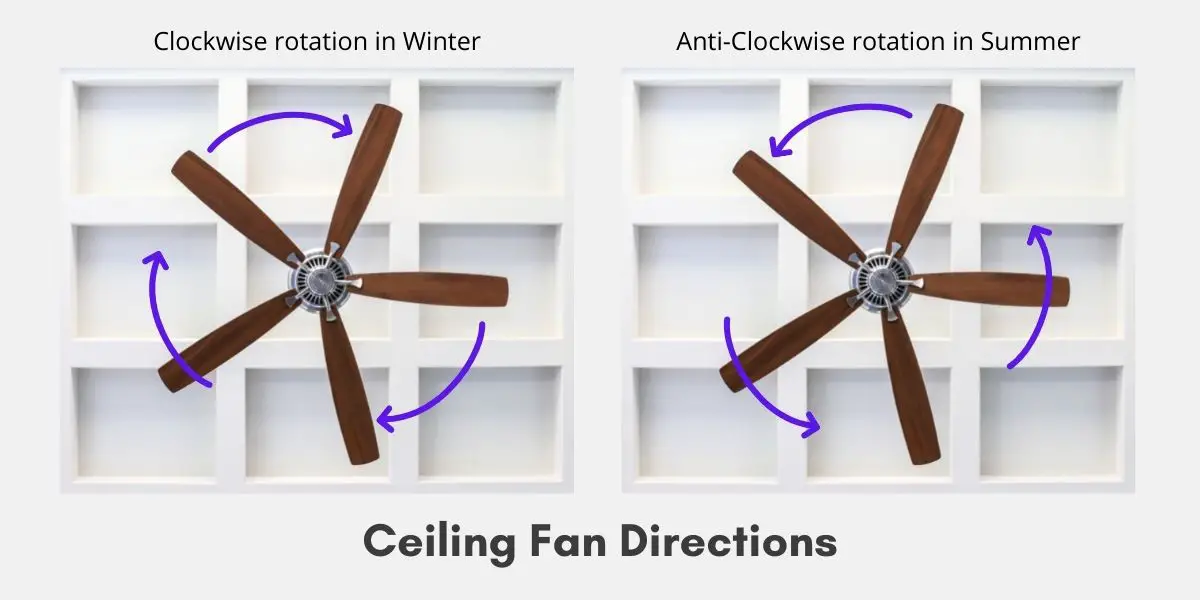
And while standing fans have their place, they simply can’t put out the amount of air that a solid ceiling fan can. There’s simply no easier - or cheaper - way to instantly feel cooler. But you can confirm this with visual confirmation as well.At, we’re big proponents of ceiling fans. If your fan is like 99.8% of the other dual direction fans out there, then feeling a breeze means that it’s rotating counterclockwise because this is the direction of the summer mode. If the blades are spinning in winter mode, then you shouldn’t notice any significant moment of air directly below the fan. Winter mode pushes the air upwards, and in a much gentler way. When a ceiling fan is in summer mode, then you will be able to feel the force of the air as it blows down on you, particularly if you switch the fan to the highest setting. If it does, then it is in summer mode and if this corresponds to visual confirmation that this occurs in the counterclockwise direction, then you can conclude that counterclockwise equates to summer mode. So, if you look for the higher side of the fan blade and then turn the fan onto a low-speed setting, you should be able to see if the fan starts turning in the direction of the higher side. Your fingers should bend downwards and slide down the angle of your palm to the space below your hands. Move your left hand forward in a straight line towards the palm of your right hand. Then tilt your right hand up by about 45° so that your fingers are higher than your wrist. To understand this, hold up your two hands horizontally, with palms down and fingertips touching. To push air down, the highest point of the blade’s pitch has to lead. Inferences Based on Blade PitchĪs mentioned earlier, the pitch of the blade is what steers air downwards when the fan is moving counterclockwise in summer mode. You can find out if your fan conforms to this rule by crosschecking with one or both of the following. This technique can definitely confirm that the fan is turning counterclockwise, and, as mentioned, in the vast majority of cases, this means your fan is in summer mode. The blades should be turning from right to left if the fan is running counterclockwise. Stand directly below the fan for the best and clearest view. To visually confirm counterclockwise confirmation, you need to set your fan to the slowest speed settings to ensure that you can properly see each blade as it rotates. It may seem like it would be obvious if a fan is spinning clockwise or counterclockwise but the ease at which you can visually confirm this depends on two main factors: how fast the fan is spinning and where you are standing. To confirm that your ceiling fan is running in summer mode, you can use one or more of the three indicators. 3 Ways to Tell Which Way Is Counterclockwise In these cases, you have to look at other signs. There may be the occasional instance in which counterclockwise turning doesn’t mean the fan is in summer mode. If a fan is going to have one mode as opposed to two, this is the one it will have, and it is almost always achieved through counterclockwise rotation.

COUNTER CLOCKWISE FAN SKIN
This is often referred to as summer mode because the air flowing over your skin causes wind chill cooling. This is because the pitch of the blade when rotating in this direction channels air downwards to create a column of air below the fan. Most ceiling fans are primarily designed to push air down when they rotate counterclockwise. Was this helpful? Counterclockwise Is Typically Summer Mode


 0 kommentar(er)
0 kommentar(er)
